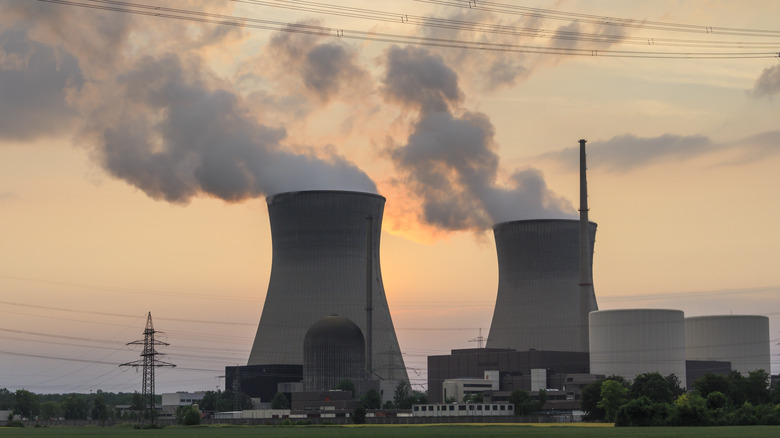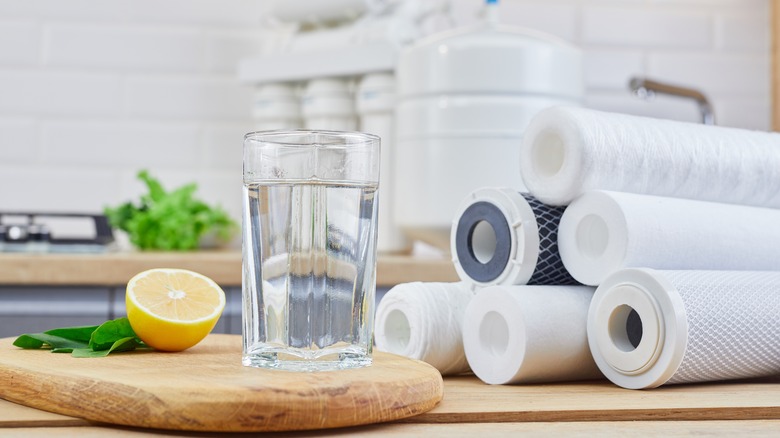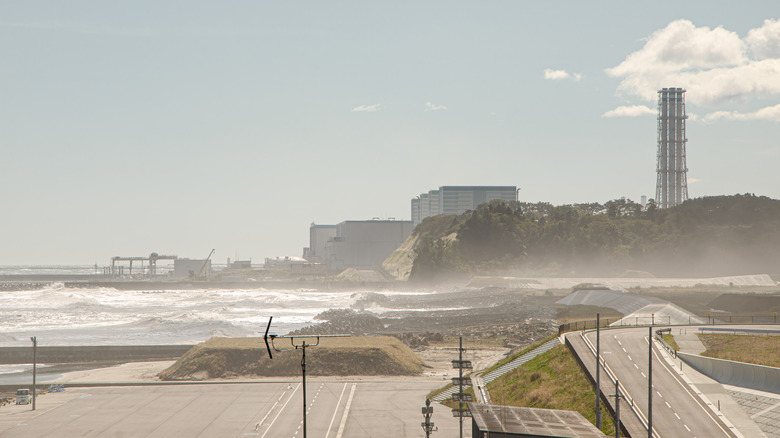This Is How Radioactive Water Is Treated
Radioactive, toxic goo: That stuff that transforms ordinary baby turtles into "Teenage Ninja Mutant Turtles." Or bestows a whole lot of other superheroes and supervillains superpowers that are most definitely not cancer. But radiation is also used to treat cancer, right? Radiation therapy uses the same kind of X-rays that let us take pictures of bones. And then there's cosmic radiation that's constantly bombarding Earth, or radiation emitted from minerals in the ground. Certain manmade objects also emit radiation, like smoke detectors, watches, televisions, glass, and ceramics.
Given all this information, radiation and radioactivity can come across as confusing terms. Radiation is the actual stuff: waves or particles transmitted between materials. If an object is radioactive, its atoms are unstable and lose particles over time. Those particles strike the human body and can actually damage the DNA inside our very cells, as the National Cancer Institute describes. Water happens to be especially good at absorbing such particles, just like it's good at absorbing heat. Needless to say, you don't really want to go around drinking radioactive water. So to purify it and remove harmful particles, Save the Water explains that we've got to force water through a kind of net that traps dangerous particles and pushes clean water through — aka use reverse osmosis.
The power of reverse osmosis
"Reverse osmosis" is one of those cool-sounding but poorly understood buzz terms plastered all over water purification products. Handheld water bottles you can fill up at a stream on a hike that use reverse osmosis to purify the water? Check. Home-use reverse osmosis water filtration kits that you can hook up to your faucet? Check. Techy words might attract certain customers, but what in the world does reverse osmosis actually mean? And is it really the case that the same process that cleans municipal water leading to your kitchen sink cleans radioactive water? Yes, and yes.
At its core, reverse osmosis is no different from a colander that drains pasta, or a coffee filter that lets through water but holds onto the grounds. Water gets passed through a semipermeable membrane — a surface that lets through some stuff, but catches other stuff — perforated with very tiny holes. How tiny? Tiny enough to catch individual particles. All those harmful particles get left behind on one side of membrane while clean, pure water exits the other side. Easy peasy.
There are a couple other ways to clean radioactive water, like carbon filtration, which uses a carbon filter to absorb radioactive particles rather than collect them. Then we've got ion-exchange water softening, which involves neither absorbing nor collecting particles, but exchanging them for other particles.
Water from the Fukushima disaster
There's a big difference in scale between a home filtration kit and massive, industrial-level water purification, although the core method remains the same. The Japanese government has had to employ such measures following the 2011 Fukushima nuclear power plant disaster. For those who need a refresher, there was a giant earthquake off the coast of Japan in 2011 that sent an enormous tsunami rushing toward the eastern coast of the country. As the World Nuclear Association says, the tsunami destroyed property and killed almost 20,000 people, and approximately 100,000 people were evacuated from their homes. The Fukushima nuclear plant's power source took a hit, the plant went offline, and all three of its cores melted in three days. Suffice it to say, it was an unprecedented disaster. Japan is still recovering to this day.
Very recently, as CNN reports, the United Nations gave the approval for Japan to dump its Fukushima-contamination water into the ocean. In the 12 years since the incident, Japan has been engaging in cleanup measures that capture the water. The Tokyo Electric Power Company (TEPCO) built enough tanks to hold 1.32 million metric tons of water. Now, the plan is to complete treatment of the water and dump it into the water. One radioactive element — tritium — can't be removed, but it can be diluted. Folks in Japan and nearby countries have expressed concern about the plan, but authorities have assured them, for better or worse, that such dumping occurs all the time.


